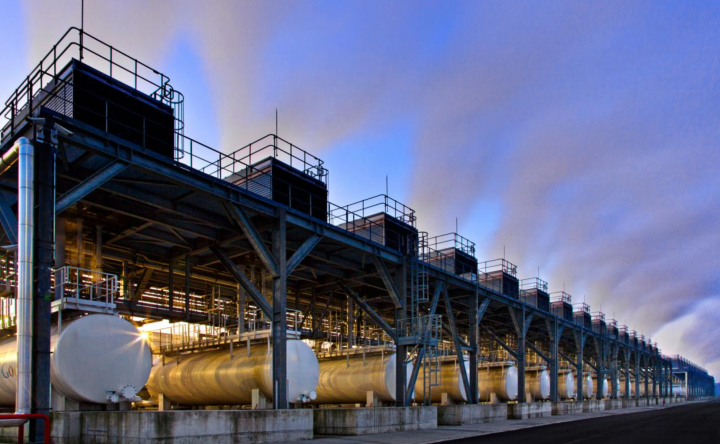
Artificial intelligence has unleashed an energy race across big tech, one investors can no longer ignore. Vast data centres now compete not only for computing power but also for electricity and water, forcing technology leaders to rethink how they source and manage energy. For portfolio managers, AI’s growth story has become inseparable from the global energy transition.
For Liudmila Strakodonskaya, ESG analyst at Comgest, the rise of AI has turned operational efficiency into a strategic battleground.
 “Be cautious regarding the AI race,” she told Investment Officer. “Be aware of the physical limitations of the digital world. The whole infrastructure behind it is encroached into very, very simple, finite natural resource constraints.”
“Be cautious regarding the AI race,” she told Investment Officer. “Be aware of the physical limitations of the digital world. The whole infrastructure behind it is encroached into very, very simple, finite natural resource constraints.”
Her warning reflects the growing tension between digital expansion and the physical world that sustains it. According to the International Energy Agency, data centres, AI, and cryptocurrency facilities consumed an estimated 460 terawatt-hours (TWh) of electricity in 2022 and could surpass 1 000 TWh by 2026, roughly the annual electricity use of Japan. In Ireland, data centres already account for over one-fifth of national power consumption, while US states like Virginia and Arizona are nearing 30 percent.
“We are reaching at least the first physical limits of the infrastructure,” Strakodonskaya said.
AI meets energy reality
Technology giants such as Google, Microsoft, Nvidia, and Meta are now competing for access to clean power. “All of them are extremely competitive right now in relation to power procurement and renewable offsets,” she said. “They are pragmatic. The clean power itself is not enough today, so they use every indirect tool possible to keep growing.”
The U.S. grid has become a major constraint. Many regional networks are running at capacity, delaying connections for both data centres and renewable projects. The combination of ageing transmission lines, congestion, and slow permitting means that power availability, not chips, has become the chief bottleneck for AI expansion.
To secure reliable energy, big tech is turning to unconventional sources. Microsoft’s plan to restart part of the Three Mile Island nuclear site in Pennsylvania has become emblematic of this shift. Using nuclear generation to power AI workloads highlights both the scale of the challenge and the industry’s determination to meet soaring digital demand.
Europe’s capacity limits
Europe’s picture is equally uneven. Google’s recent five-billion-euro investment in Belgium, backed by new wind-power contracts and an extended life for the country’s two nuclear plants, contrasts sharply with Ireland and the Netherlands, where grid congestion has halted new hyperscale projects. “Some countries still have capacity and political will,” Strakodonskaya said. “Others are effectively full.”
The patchwork underscores how digital growth collides with physical limits. While the U.S. still has more space to build, it too faces the same constraints of transmission and generation. AI’s advance, she argues, is bound by the same forces that govern global energy and water supply.
Against this backdrop, the ESG conversation inside big tech is shifting from policy to engineering. ESG and AI teams are collaborating out of necessity.
“There are no direct signs in their public documentation that say these teams are seated together,” she said, “but when you look at who joins the calls on these issues, there is always an ESG person or environmental strategist, and also the infrastructure planner or the AI lead.”
Efficiency as an edge
The new convergence of sustainability and technology is being driven by cost and energy efficiency. “I cannot say that today sustainability is the first point that pushes companies to look into energy efficiency of data centres. It is not, but it follows,” Strakodonskaya said. “Once you start optimising your efficiency, you start potentially reducing your energy intensity, and you are also trying to figure out how the clean energy is coming to your data centre.”
The trend is clear in hyperscale investments. Beyond Microsoft’s nuclear restart, companies are deploying liquid cooling, next-generation chips, and grid-balancing technologies to stabilise supply. Energy and water management is increasingly seen as a differentiator that will shape big tech valuations over the next decade.
Scale
The combined market capitalisations of Apple, Microsoft, and Alphabet, together exceeding nine trillion dollars, now rival the GDP of Germany, Japan, and the United Kingdom. Their energy choices therefore have systemic implications, not just for technology investors but for global resource markets.
At Comgest, these constraints are feeding directly into investment analysis. Despite a visible ESG backlash in the U.S., the firm in July launched Comgest Growth America ESG Plus, an extension of its flagship American growth strategy under ESMA’s Article 8 framework. The fund applies the same concentrated, quality-growth approach while emphasising material ESG risks and operational realities.
“Our research into the ESG footprint of data centres directly feeds into our company analysis,” Strakodonskaya said. For hyperscalers such as Alphabet or Oracle, that means assessing whether strategies fully address the energy and infrastructure dependencies of expansion. For related holdings such as Vulcan Materials, a supplier of aggregates and concrete, and Analog Devices, the focus is on diversifying beyond data-centre-driven growth and expanding low-carbon, electrification solutions.